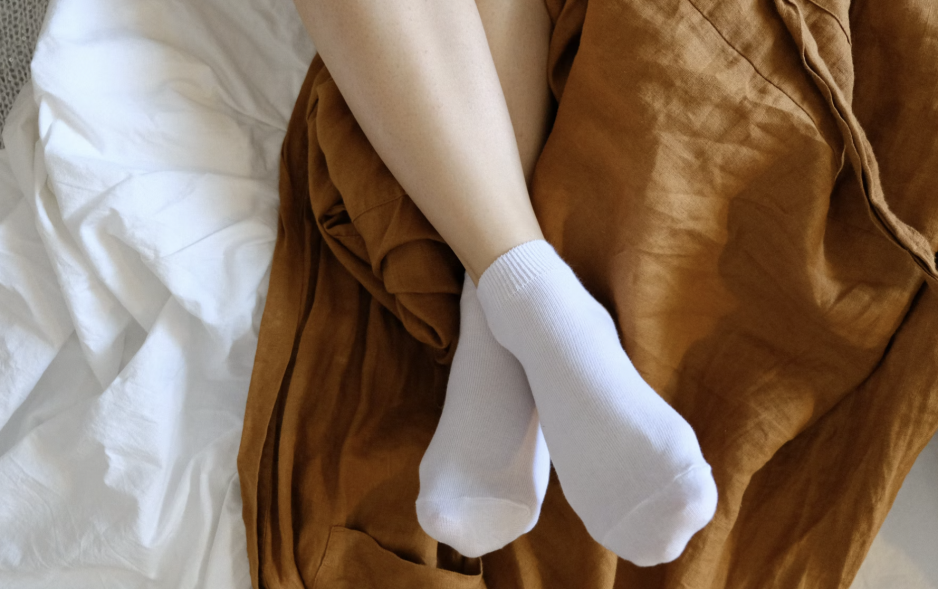Do cotton socks contain 100% cotton? Do you know which kind of sock material is most friendly to sensitive skin? What makes the best material for socks that have moisture-wicking ability?
Choosing a pair of comfortable socks sounds easy, but that’s not always true. You need to take account of different occasions and seasons, especially for summer and winter. Different composition of sock materials account for different features of socks.
Cotton
Cotton is produced from the fibers of a cotton plant. It is the most common material used in the production of socks, and for various reasons. It is an excellent sock for everyday use, and when combined with different blends of fabric, it can make socks that are used for other purposes, such as outdoor activities and more.
Here are some of the pros and cons of cotton:
Pros:
Very lightweight material that absorbs moisture well.
Very soft material that provides comfort
Breathable
Easy to wash in a machine or by hand
Durable
Beneficial for sensitive skin
Can dry quicker than other materials
Holds color fairly well
Cons:
Absorbs moisture easily
Can lead to friction and irritation if worn for extended periods while wet
More expensive, especially organic and combined cotton
Keeps your feet colder because they hold moisture
Becomes heavier when wet
Can shrink when washed in hot water or machine dried with heat

After looking at the pros and cons of cotton, you will find that cotton works great for certain types of socks. Cotton socks function best for everyday use with casual shoes or sneakers. If you plan to physically exert yourself or expect your feet to become wet or sweaty, you will want to avoid 100% cotton socks.
There are specific blends of cotton socks that make them more resistant to moisture, such as polyester and cotton. Polyester is a non-absorbent material that, when mixed with cotton, makes one of the best combinations of sock fabrics.
Cotton and polyester mixed socks can be used for almost any type of activity. They are durable, water-resistant, and comfortable. If you want to use your socks for aerobic activities as well as everyday wear, then a mix of cotton and polyester is the best choice.
Wool
Wool socks are the second most commonly utilised material for sock production and it certainly ain’t baaaaaaaad… because it comes from sheep.
Wool socks quality can be quite variable depending on several factors ranging from the breed of sheep the wool is taken from to the time of year that the sheep was sheared, however, much like cotton, it has very few disadvantages and is great for general wear.
Pros
Great for colder weather, insulation, and comfort when lounging at home
Holds its shape well and difficult to wrinkle
Wide variety of dyes, while colour remains bleed-resistant
Excellent moisture absorber, while remaining breathable
Extremely soft (if high quality wool)
Natural material

Cons
Low quality wool can become itchy and uncomfortable
Not recommended for machine-washing (though it is possible)
Can be prone to developing holes if severely distressed
Not very lightweight (especially when wet)
Bad for warmer weather
Animal product
Wool is definitely an excellent choice of sock for chilling at home or for day-to-day use during the colder months.
But, if your feet are prone to overheating or sweating, wool is best avoided – especially if the weather heats up.
Nylon
Nylon is a synthetic material that is usually blended with other fabrics to create some durable and highly elastic socks.
Pros
VERY stretchy, durable, and lightweight
Pretty cheap and widely available
No animals harmed
Not bad for keeping in the heat
Cons
Susceptible for pilling (little balls on the surface of the sock)
Better when blended
Man-made and not biodegradable
Not very breathable
Like several of the materials on this list, nylon is man-made and not biodegradable, so not a great choice for you environmentalists out there. HOWEVER, they are very durable, so you’ll definitely get some great wear out of socks containing nylon. A very versatile material for versatile socks.
Polyester
Polyester is a human-made synthetic material that is produced using a chemical reaction between acid and alcohol. Because of its human-made characteristics, polyester is robust and durable, which makes it a great material to use in socks and many other items.
Although polyester is sometimes not perfect for a sock, when added with other materials and used in a well-designed sock, it can make a very good athletic sock.
Here are the pros and cons of polyester:
Pros:
Very resilient and long-lasting
Durable
Does not shrink
Holds its shape well
Dries quickly
Stain-resistant
Easily dyeable and holds colors well
Less expensive
Cons:
Not breathable if thick sock (but can if in an athletic sock)
Moisture does not evaporate well while being worn (unless combined with other material)
If regularly wet, bacteria and fungi can grow
Can cause sweaty feet to smell
Harmful to the environment, never decomposes
Poor quality compared to some other fabrics
Can cause your feet to overheat
Polyester socks are inexpensive and very durable. This material is not as highly recommended as others such as cotton, wool, and bamboo when used on its own. However, when polyester is blended with other fibers, such as cotton, it produces terrific material for socks.
We hope this can provide you with some useful knowledge about sock materials. If you have any questions, please leave a comment below.
If you need help in customizing and wholesaling your wanted sock materials, please feel free free to CONTACT US.